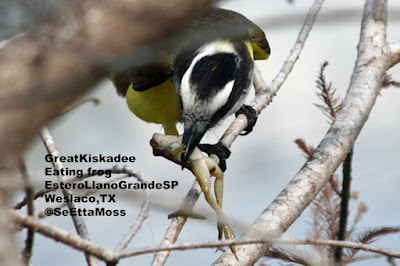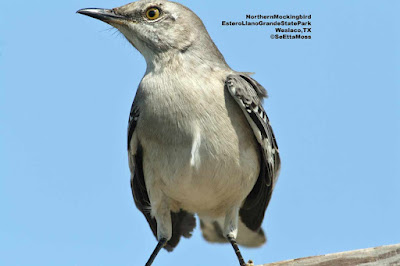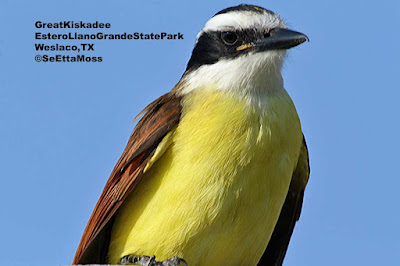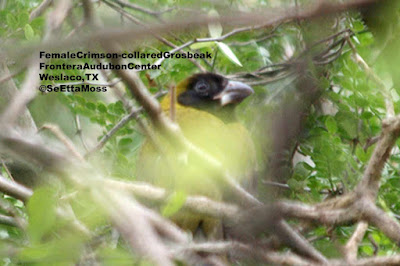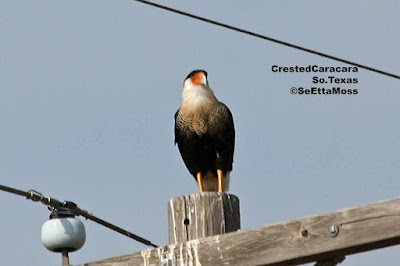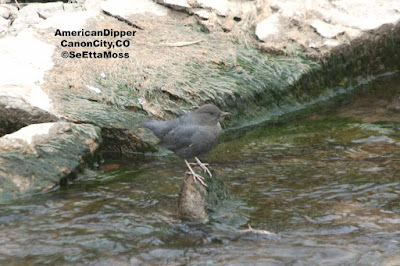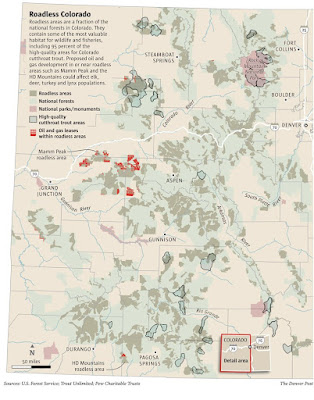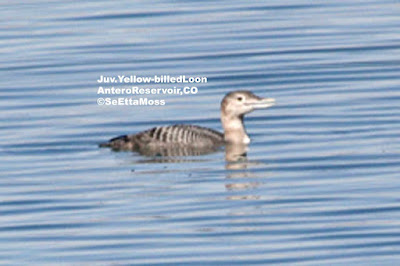I participated in the Christmas Bird Count at Estero Llano Grande State Park in Weslaco, Tx today and it was hot--both in terms of the birds and the temperature. In fact the high temperature of 90 degrees was a record for Weslaco for this date. With the strong winds that blew much of the day, and the high humidity, it was challenging though very different from the Christmas Bird Counts I usually go to in Colorado. The Common Pauraque in this pic was one of the great birds I saw at this state park that is one of the World Birding Center designated sites. Common Paurague's are found in the U.S. only in southern Texas. This bird, like others of it's species, sleeps during the day. As seen in the pic the bird's eye is open a bit. It was like that when we first saw it so I think it may sleep that way, possibly in order to be aware of predators. SeEtta
